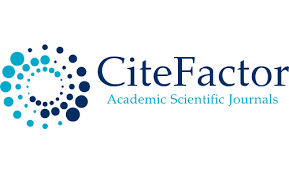Provide lesson ideas for usage of online resources
Keywords:
Knowledge, computer and software products, Computer technologyAbstract
One of the main tasks of special educational institutions is to provide students with the knowledge created throughout the history of mankind, to create appropriate conditions for regular knowledge of the basics of science, to select the necessary information and to meet their needs for learning by teaching them to study independently. is to satisfy and increase their interests. The unprecedented development of computer and software products opens wide opportunities for the use of information technologies in the natural sciences as well
References
Information and communication technologies in education: UNESCO Institute for
information technologies in education - M. : IITO UNESCO, 2013.[1]
Novak, P. The Growing Digital Divide: Implications for an Open Research Agenda.
Understanding the Digital Economy: Data, Tools and Research. Ed. B. Kahin and E.
Brynjolffson. Cambridge, MA: The MIT Press., 2000.[2]
Measuring the Information Society (MIS). Executive summary. ITU edition, 2015.[3]
Information and communication technologies and systems. Textbook. Dadabaeva R.A.,
Nasridinova Sh.T., Shoakhmedova N.Kh., Ibragimova L.T., Ermatov Sh.Tashkent "Sanostandart", 2017.[4]
John Fowles as an existentialist writer and realist literary trends and its philosophicalpsychological approaches
SB Ibodullayevna, AN Rajavalievna, AQ G’anievna, MG Ergashevna, 湖南大学学报 (自然科
学版), 2022 - 2
https://scholar.google.com/citations?view_op=view_citation&hl=ru&user=Ja_3scYAAAAJ
&citation_for_view=Ja_3scYAAAAJ:u-x6o8ySG0sC
Tailakov N.I. Prospects of implementation of modern information technologies in the
educational system // Education and training Tashkent 2002[6]
Specify how lexis is grouped M Bo’ronova, G Mirzayeva, Eurasian Journal of Social
Sciences, Philosophy and Culture, 2022.
https://scholar.google.com/citations?view_op=view_citation&hl=ru&user=Ja_3scYAAAAJ
&citation_for_view=Ja_3scYAAAAJ:d1gkVwhDpl0C
Downloads
Published
Issue
Section
License

This work is licensed under a Creative Commons Attribution-NonCommercial 4.0 International License.
User Rights
Under the Creative Commons Attribution-NonCommercial 4.0 International (CC-BY-NC), the author (s) and users are free to share (copy, distribute and transmit the contribution).
Rights of Authors
Authors retain the following rights:
1. Copyright and other proprietary rights relating to the article, such as patent rights,
2. the right to use the substance of the article in future works, including lectures and books,
3. the right to reproduce the article for own purposes, provided the copies are not offered for sale,
4. the right to self-archive the article.












